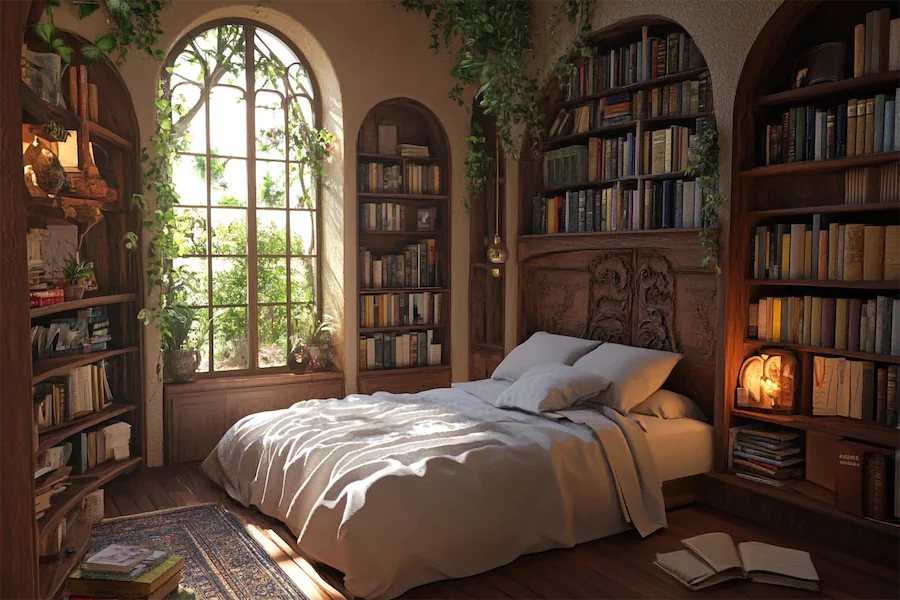A library bedroom seamlessly combines a personal reading sanctuary with a restful sleeping area, offering both functionality and aesthetic appeal.
Introduction to Library Bedrooms
Integrating a library into a bedroom creates a dual-purpose space that caters to relaxation and intellectual engagement. This design approach maximizes available space and reflects a love for literature, making the bedroom a personalized retreat.
History and Origins of Library Bedrooms
The concept of combining sleeping quarters with reading areas dates back to historical periods when private studies or boudoirs adjoined bedrooms. In modern times, especially in urban settings with limited space, the fusion of a library and bedroom has become a practical solution for book enthusiasts seeking to incorporate their collections into their living spaces.
Key Features of Library Bedrooms
- Built-in Bookshelves: Custom shelving units utilize vertical space efficiently, providing ample storage for books while adding architectural interest to the room. Floor-to-ceiling shelves can frame the bed, creating a cozy nook and a focal point.
- Integrated Reading Nooks: Incorporating a comfortable chair or window seat within the bedroom offers a dedicated spot for reading, enhancing the room’s functionality. Positioning the reading area near natural light sources can improve the reading experience.
- Ambient Lighting: Proper lighting is essential in a library bedroom. Adjustable wall sconces or bedside lamps provide focused illumination for reading, while softer overhead lighting maintains a relaxing atmosphere.
- Ladder Access: In rooms with high ceilings and extensive book collections, a rolling library ladder adds both practicality and a classic library aesthetic, allowing easy access to upper shelves.
- Personalized Decor: Incorporating personal items, such as artwork, plants, or collectibles, alongside books can create a space that reflects individual tastes and interests, making the room uniquely inviting.
Applications of Library Bedroom Design
- Small Apartments: In compact living spaces, combining the bedroom and library maximizes functionality without requiring additional rooms, making efficient use of limited square footage.
- Guest Rooms: A library bedroom can serve as a multipurpose space, offering guests a comfortable place to sleep and a private area to read or relax, enhancing their stay.
- Home Offices: Integrating a library into a bedroom that doubles as a home office creates a cohesive environment for work, rest, and leisure, promoting productivity and comfort.
Considerations When Designing a Library Bedroom
- Space Planning: Careful measurement and planning are crucial to ensure that bookshelves and furniture fit appropriately without overcrowding the room, maintaining a balanced and harmonious layout.
- Weight Support: Books can be heavy, so it’s important to ensure that shelving units are securely anchored and capable of supporting the weight to prevent accidents and maintain safety.
- Climate Control: Maintaining appropriate humidity and temperature levels is essential to preserve book collections, preventing damage such as warping or mold growth.
- Aesthetic Cohesion: Selecting materials, colors, and furniture that complement both the bedroom and library elements ensures a unified and pleasing design, creating a seamless integration of functions.
Conclusion
A library bedroom offers a harmonious blend of rest and intellectual stimulation, making it an ideal sanctuary for book lovers. By thoughtfully integrating bookshelves, reading areas, and appropriate lighting, you can create a space that is both functional and reflective of your personal style, enhancing the overall living experience.
